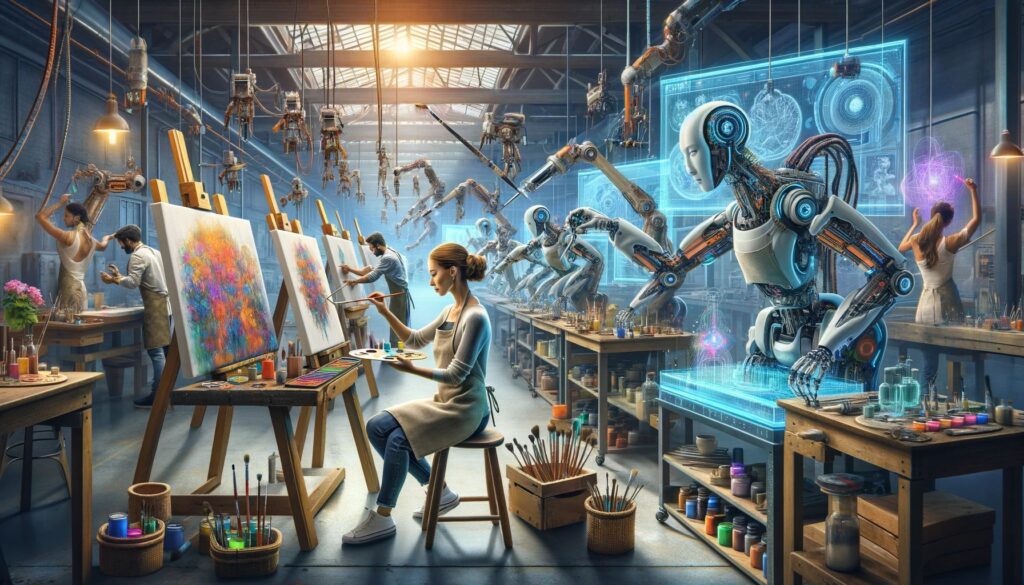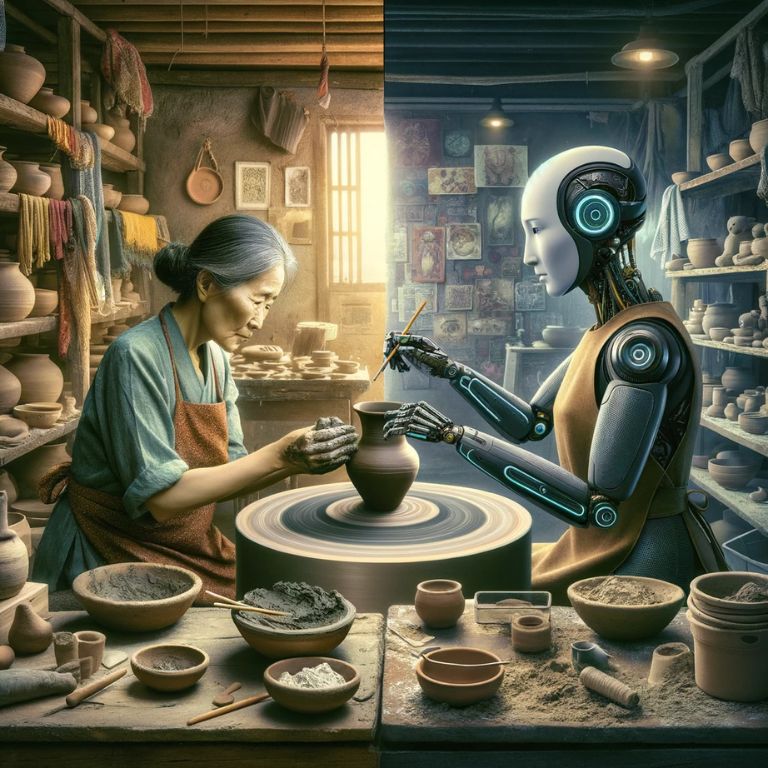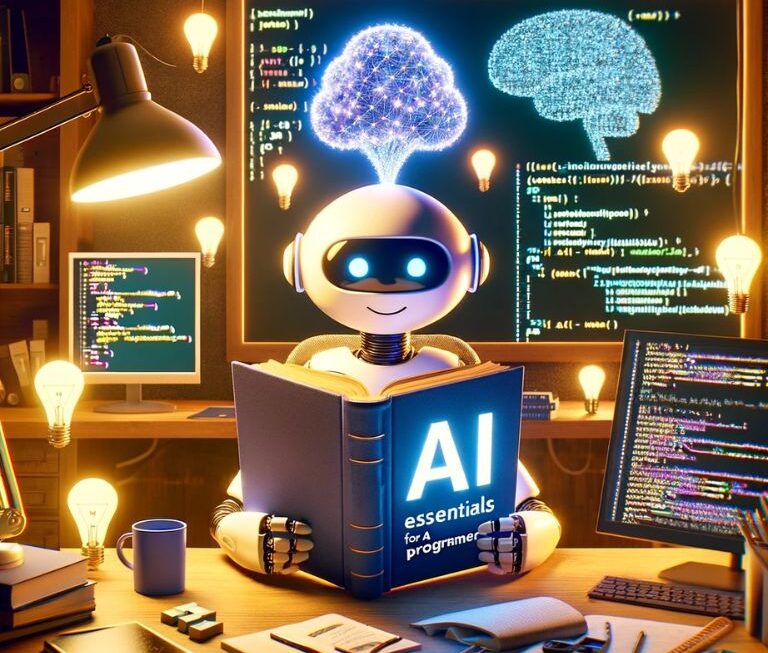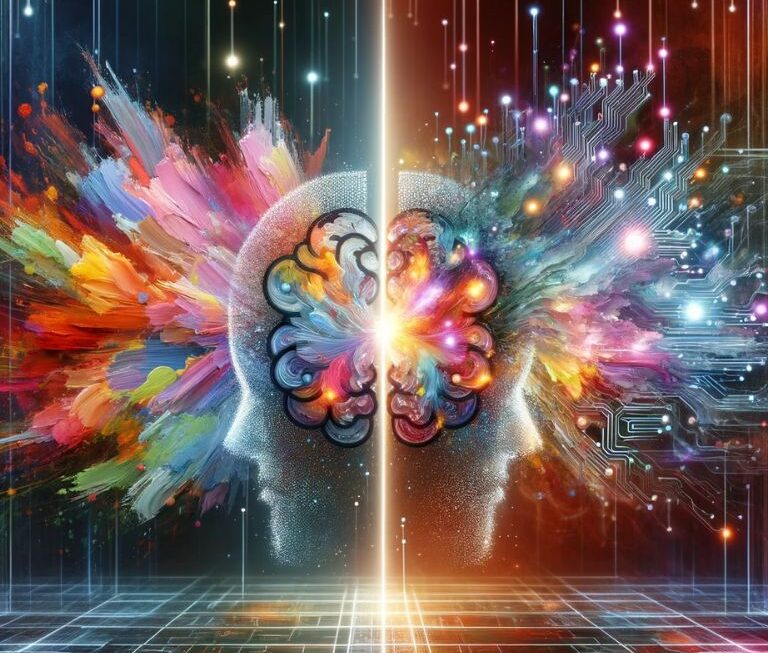AI’s integration with traditional crafts blends tradition and innovation, introducing new tools and creative possibilities to artisans. This fusion prompts discussions about balancing technology with preserving heritage.
Understanding the Basics of AI
Artificial Intelligence (AI) has become a buzzword in today’s technological landscape, but what exactly does it entail? At its core, AI refers to the simulation of human intelligence in machines. These machines are designed to think like humans and mimic their actions, whether it’s learning, problem-solving, or decision-making. AI systems can range from simple algorithms performing specific tasks to complex neural networks capable of learning and adapting over time.
The Essence of Traditional Crafts and Artisanal Work
Traditional crafts are the heartbeat of global cultural heritage. They encapsulate not just tangible products but stories and traditions, representing generations of skill and dedication. The essence of these crafts lies in their uniqueness and the human touch in their creation. Yet, the modern era, with mass production and digitalization, poses grave challenges. Artisans grapple with shifting market demands, competition from cheaper alternatives, and waning interest in preserving these timeless skills, endangering the survival of cherished traditions.
AI as a Beacon of Hope for Traditional Crafts
Enter AI, a potential game-changer for traditional artisans. AI can be a beacon of hope in several ways:
- Design Assistance: AI can help artisans experiment with new designs and patterns, enabling them to create more diverse and intricate works while maintaining the essence of their traditional techniques.
- Market Analysis: Through AI algorithms, artisans can analyze market trends and consumer preferences, allowing them to tailor their products to meet current demands without losing their cultural authenticity.
- Skill Enhancement: AI-based tools can assist in the training and skill enhancement of artisans, especially in areas where traditional mentorship is dwindling.
- Global Reach: AI-integrated platforms can help artisans reach a global audience, showcasing their work to a wider market and ensuring the sustainability of their craft.
AI in Design: A New Era for Artisans

Incorporating AI into design heralds a fresh era for artisans, offering innovative tools to amplify their creativity while preserving traditional craftsmanship and cultural richness.
AI Tools for Enhanced Design Precision
Artificial Intelligence is revolutionizing the way artisans approach design. AI tools offer enhanced precision, enabling creators to delve into intricate patterns and complex designs that were previously challenging or time-consuming. These tools can analyze historical data and current trends to suggest designs that align with both traditional aesthetics and modern tastes. By leveraging AI, artisans are not only preserving their heritage but also evolving it to meet contemporary standards.
Illustrative Examples: Achievements in AI-Enhanced Design Projects
- Textile Design Revival in India: AI revives ancient textile patterns from historical artifacts.
- Japanese Ceramics Revival: AI suggests glaze patterns and colors, breathing new life into traditional Japanese pottery.
- Balinese Woodworking: AI generates intricate carving patterns while honoring Balinese tradition.
- Italian Glass Art: AI predicts color and shape melding for complex, vibrant glass artworks.
- Moroccan Metalwork: AI enhances metal lantern designs with traditional Moroccan flair and precision.
AI-Driven Market Expansion for Artisans
It signifies a transformative shift, as artificial intelligence opens up new avenues for artisans to reach global audiences, enhancing their craft’s sustainability and reach.
Digital Marketplaces and AI: Reaching Global Audiences
The integration of AI in digital marketplaces has opened a world of opportunities for traditional artisans. These platforms use AI algorithms to match products with the right audience, enhancing visibility and reach. AI-powered analytics enable artisans to understand customer preferences, optimize their product listings, and even predict market trends. This global reach, facilitated by AI, is crucial for artisans to sustain and grow their businesses in a digital-first world.
AI in Marketing and Customer Interaction
- Personalized Recommendations: AI analyzes customer behavior for product recommendations, boosting sales.
- Social Media Optimization: AI enhances social media reach and engagement for artisans.
- Customer Service Chatbots: AI chatbots aid instant support and shopping assistance.
- Targeted Advertising: AI enables precise digital ad targeting.
- Feedback Analysis: AI analyzes customer feedback, offering valuable insights.
The Blending of AI and Artisan Techniques

It represents an exciting fusion, where AI seamlessly integrates with traditional skills, enriching creativity, preserving heritage, and ensuring crafts’ enduring relevance.
Collaborative Projects Between AI and Artisans
The fusion of AI with traditional artisan techniques is not just about technology assisting artisans; it’s about a collaborative synergy that benefits both realms. Several projects worldwide have demonstrated how AI can work alongside artisans to create unique pieces that are a blend of ancient craftsmanship and modern technology. These collaborations often result in products that are not only aesthetically pleasing but also embody the richness of traditional art with the efficiency and precision of AI.
Preserving Traditional Techniques with AI
- Craftsmanship Archives: AI digitally preserves traditional crafting techniques for future generations.
- AI Training Tools: New artisans learn from AI-guided virtual mentors, preserving traditional teaching methods.
- Artifact Restoration: AI aids in restoring historical artifacts, reconstructing missing parts.
- Traditional Design Documentation: AI documents and analyzes traditional designs, inspiring new creations while honoring heritage.
- Sustainable Crafting: AI optimizes resource use, promoting environmental sustainability in traditional crafts.
Training Artisans in AI: Bridging the Gap
Training Artisans in AI is the pivotal link in equipping artisans with the skills and knowledge needed to harness AI’s transformative potential in their craft.
Educational Programs and Workshops
As the world of traditional crafts intersects with AI, the need for educating artisans in this new technology becomes crucial. Numerous initiatives, ranging from local workshops to online courses, are now available, aiming to equip artisans with the skills to leverage AI in their work. These programs focus on teaching the basics of AI, how it can be applied to craft, and practical ways to integrate these tools into their traditional practices. By demystifying AI and making it accessible, these educational efforts are empowering artisans to embrace technological advancements while preserving their heritage.
Triumphs of Craftsmen Embracing AI
- Guatemalan Weaver’s Renaissance: AI-empowered design software boosted sales by blending traditional and modern patterns.
- Portuguese Pottery Mastery: AI analysis led a potter to craft a unique, globally appealing style.
- Reviving Indigenous Jewelry: AI revived ancient indigenous jewelry designs.
- Kenyan Woodcarver Goes Global: AI-integrated e-commerce expanded the woodcarver’s global customer base.
- Sustainable Indian Fashion: AI predicted trends, helping create eco-friendly clothing recognized internationally.
Ethical Considerations and Cultural Impact
AI and the Question of Authenticity
Blending AI with traditional crafts raises ethical concerns, particularly regarding authenticity. As AI contributes to design and production, questions emerge about preserving the essence of handmade items and defining the boundary between human craftsmanship and machine involvement. Beyond safeguarding techniques, it touches on the preservation of cultural identity and heritage. To address these issues, a balanced approach is needed, respecting tradition’s value while embracing technological progress.
Balancing Tradition and Innovation
Achieving harmony between tradition and innovation is crucial in the successful integration of AI into traditional crafts. This equilibrium requires a profound appreciation for preserving the essential aspects that define these crafts while embracing innovation. AI should be viewed as a tool to augment rather than supplant artisan skills, ensuring crafts evolve while staying rooted in their cultural heritage. The goal is a collaborative bond between artisans and technology, where AI supports and safeguards traditional techniques, not overshadowing or supplanting them.
Predictions on Integrating AI into the Future of Crafts
It offers insights into the exciting possibilities as AI seamlessly merges with traditional crafts, enriching heritage and fostering innovation.
Emerging Trends in AI and Craftsmanship
- Personalized Scale: AI enables artisans to offer personalized products at scale, maintaining handcrafted essence.
- Sustainable Practices: AI optimizes materials, reducing waste for sustainable crafting.
- VR/AR Crafting: AI-driven VR/AR enhances immersive customer experiences.
- Artisanal Bots: AI-powered robots assist in tasks, freeing artisans for creative work.
- Global Networks: AI connects artisans worldwide, fostering collaboration and sharing.
Expert Opinions and Future Outlook
AI and traditional crafts experts foresee a future of harmonious integration. They anticipate AI serving as a catalyst for innovation, not a replacement for human skill. This coexistence will see AI tools enhancing artisan abilities, preserving cultural significance, and bridging the gap between tradition and technology. As AI evolves, it promises greater creative possibilities, empowering artisans to explore new horizons while honoring their heritage.
Conclusion
The convergence of AI and traditional crafts signifies a profound shift in the relationship between technology and heritage. It goes beyond mere advancement, forging a symbiotic bond where innovation enriches tradition. This integration promises to elevate creativity, expand markets, and sustain age-old crafts, embodying the harmonious fusion of human artistry and technological prowess. As we look ahead, this dynamic blend preserves handcrafted authenticity while harnessing AI’s efficiency. It’s not just a boon for artisans; it’s a lifeline for cultural legacies. In this new era, nurturing an environment where technology empowers artisans ensures their skills and stories endure, inspiring future generations.




